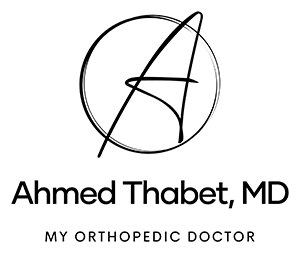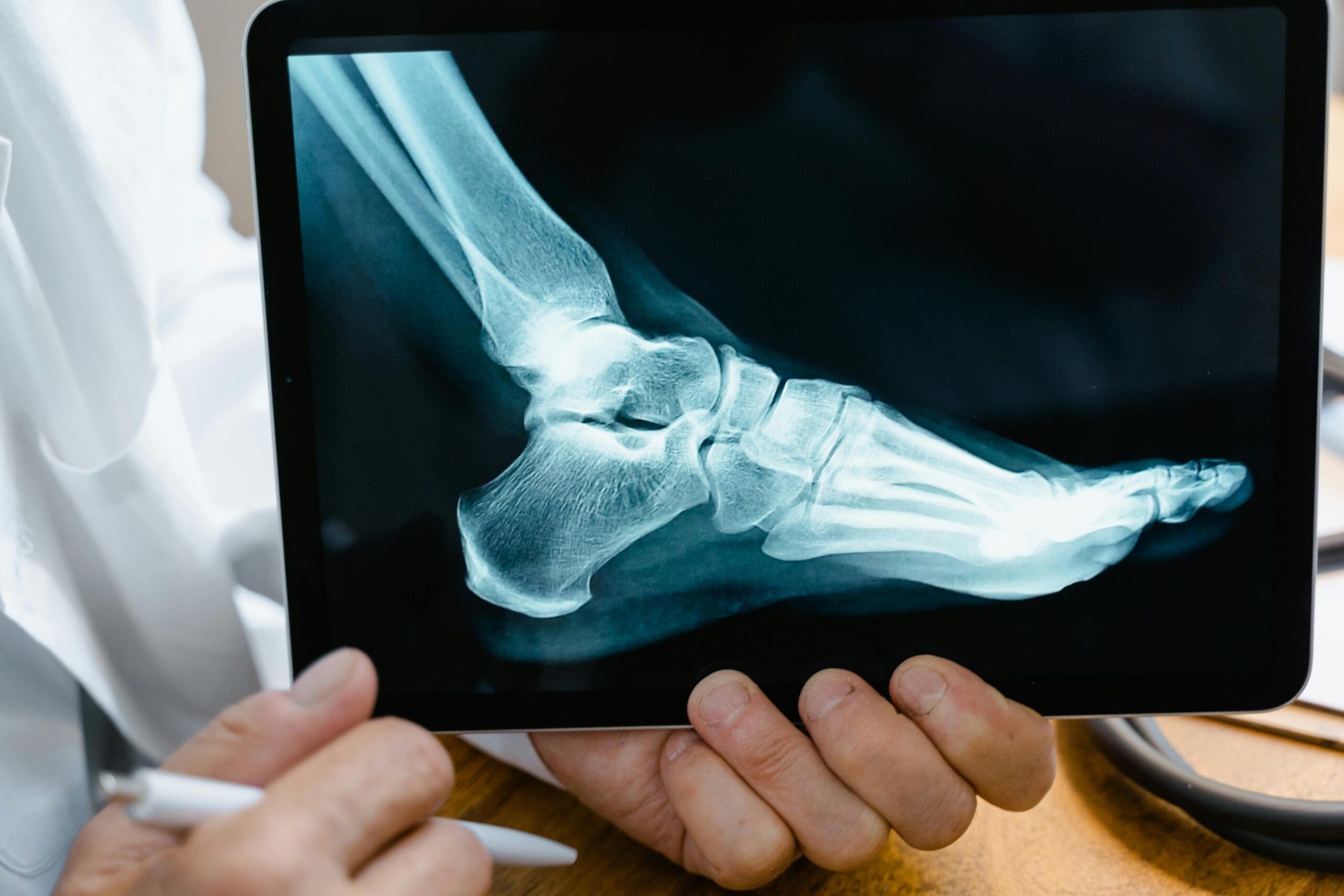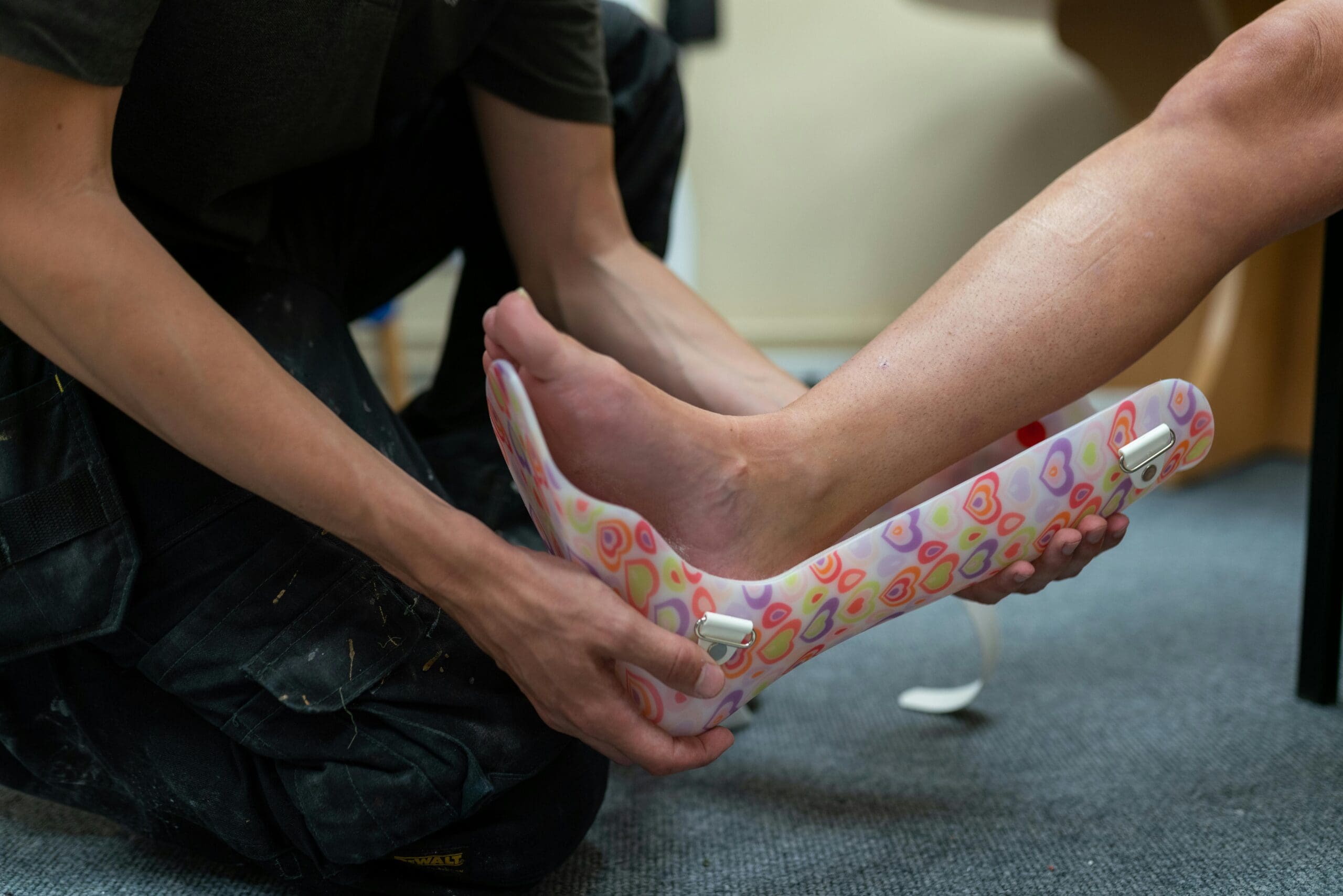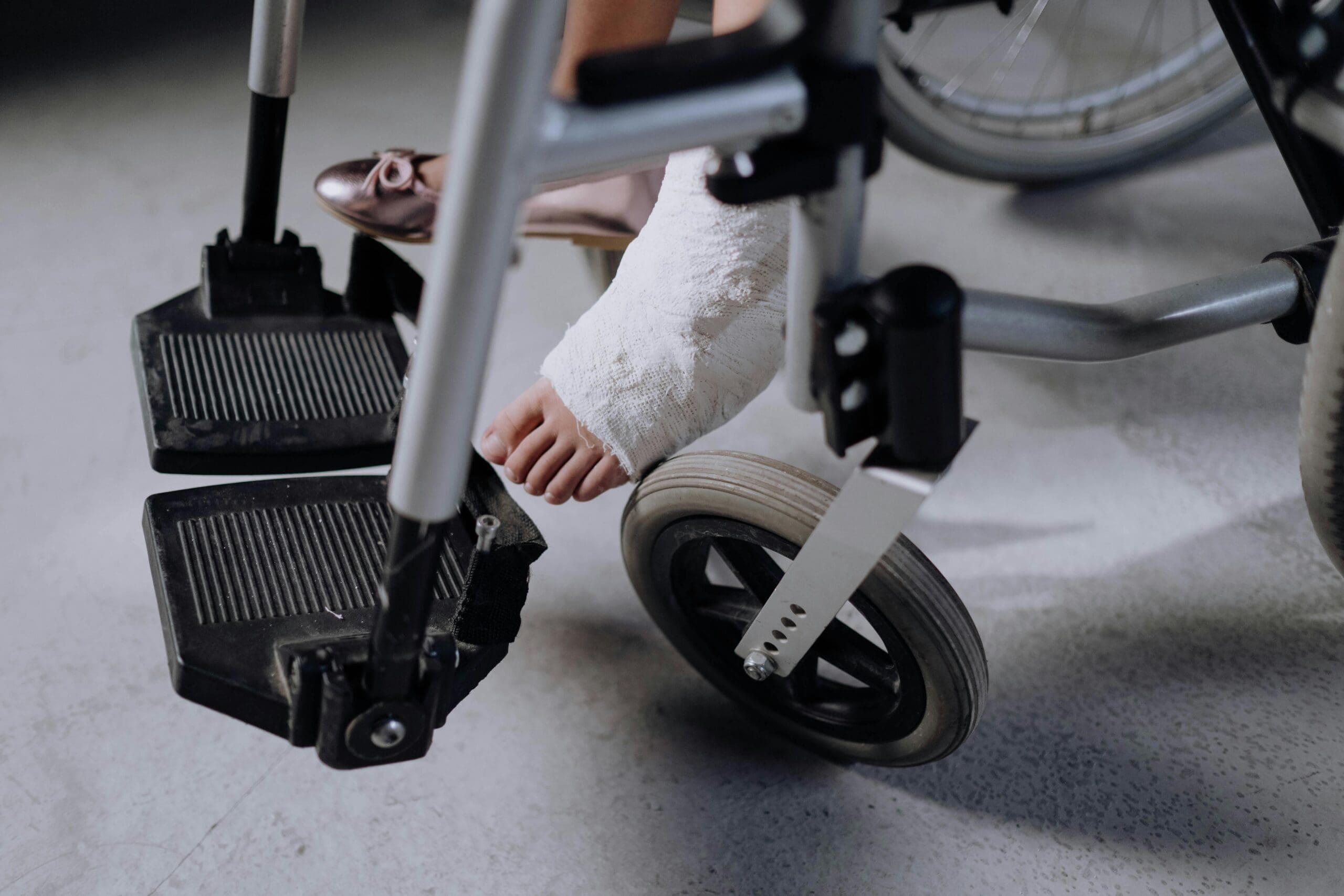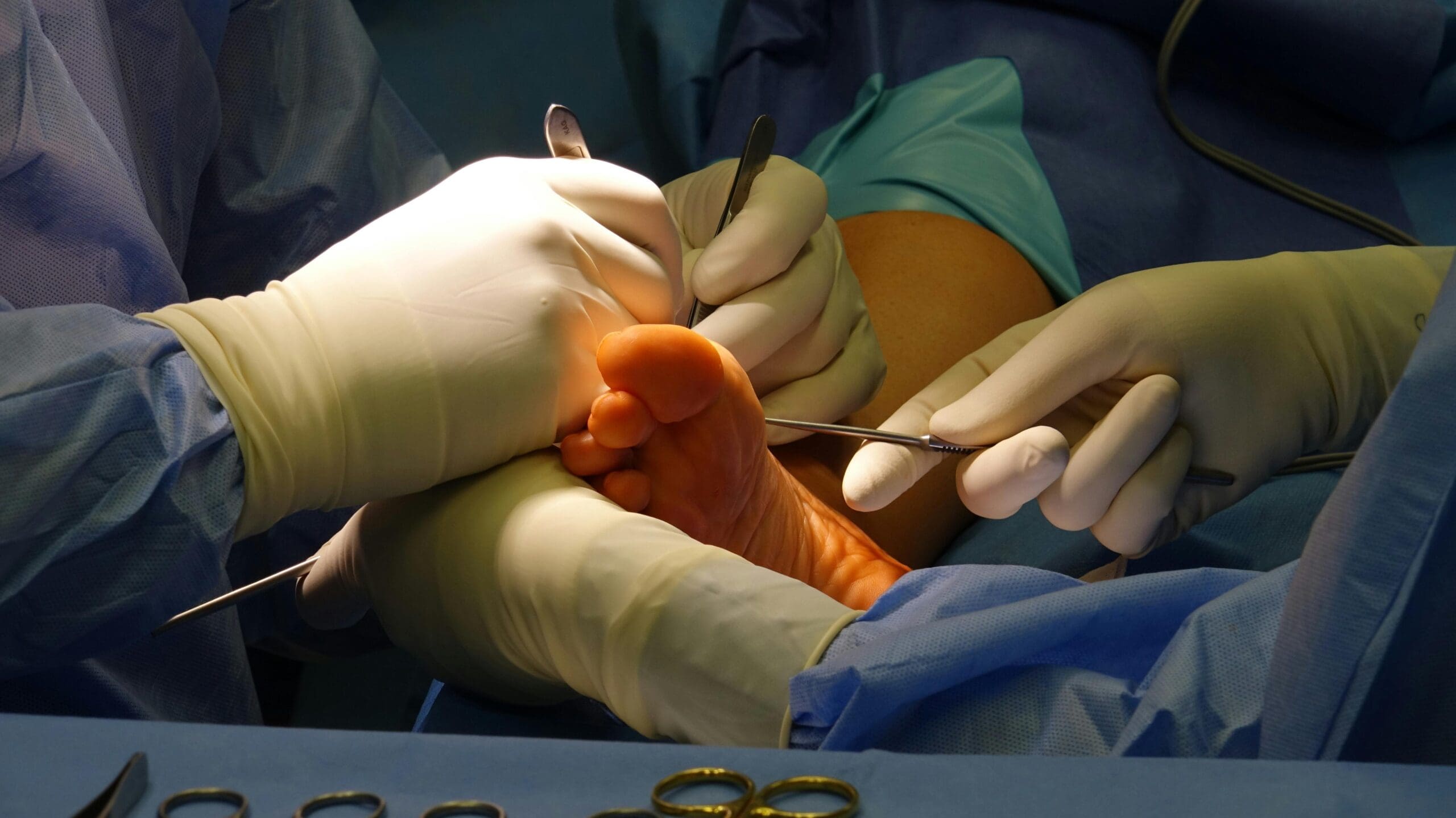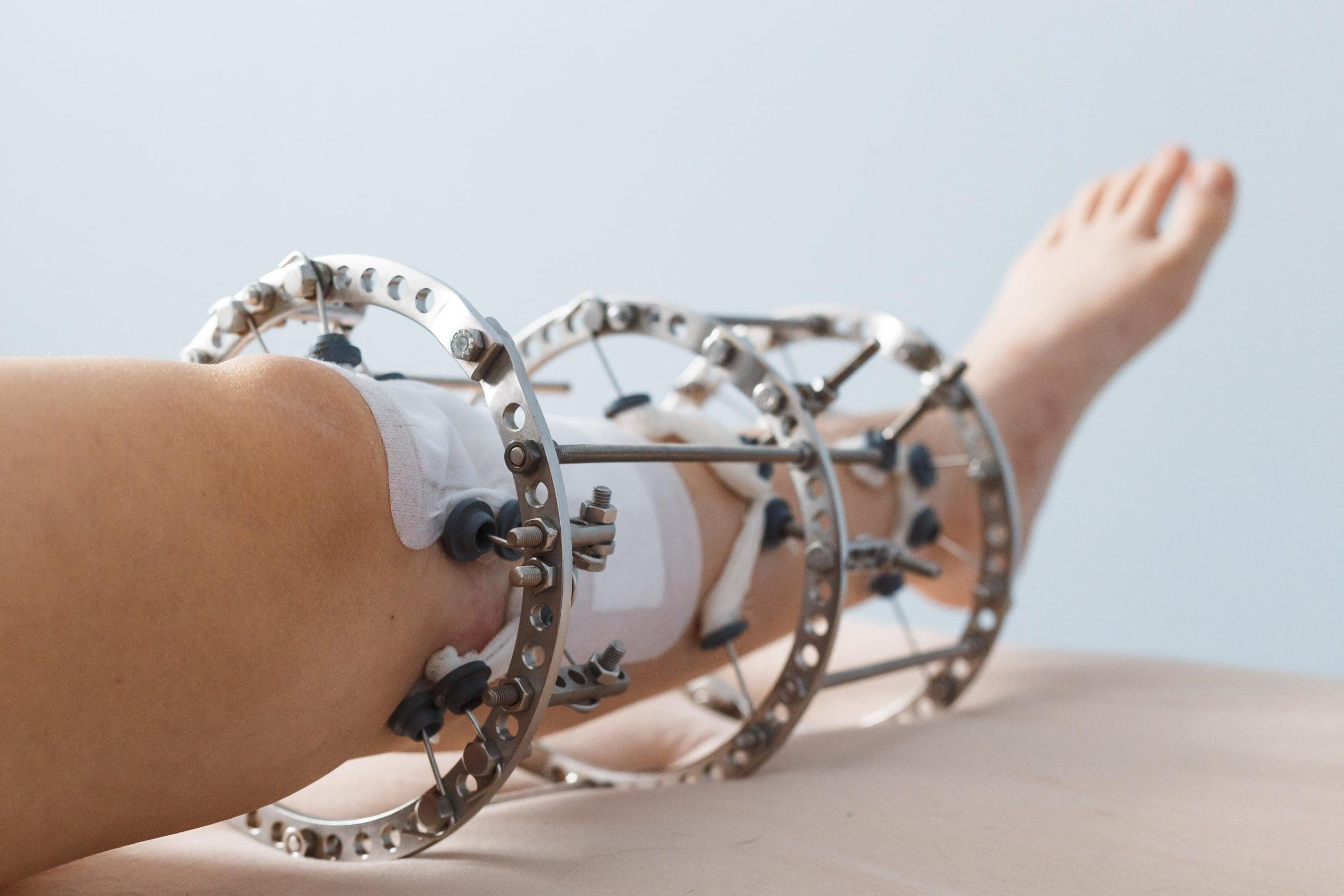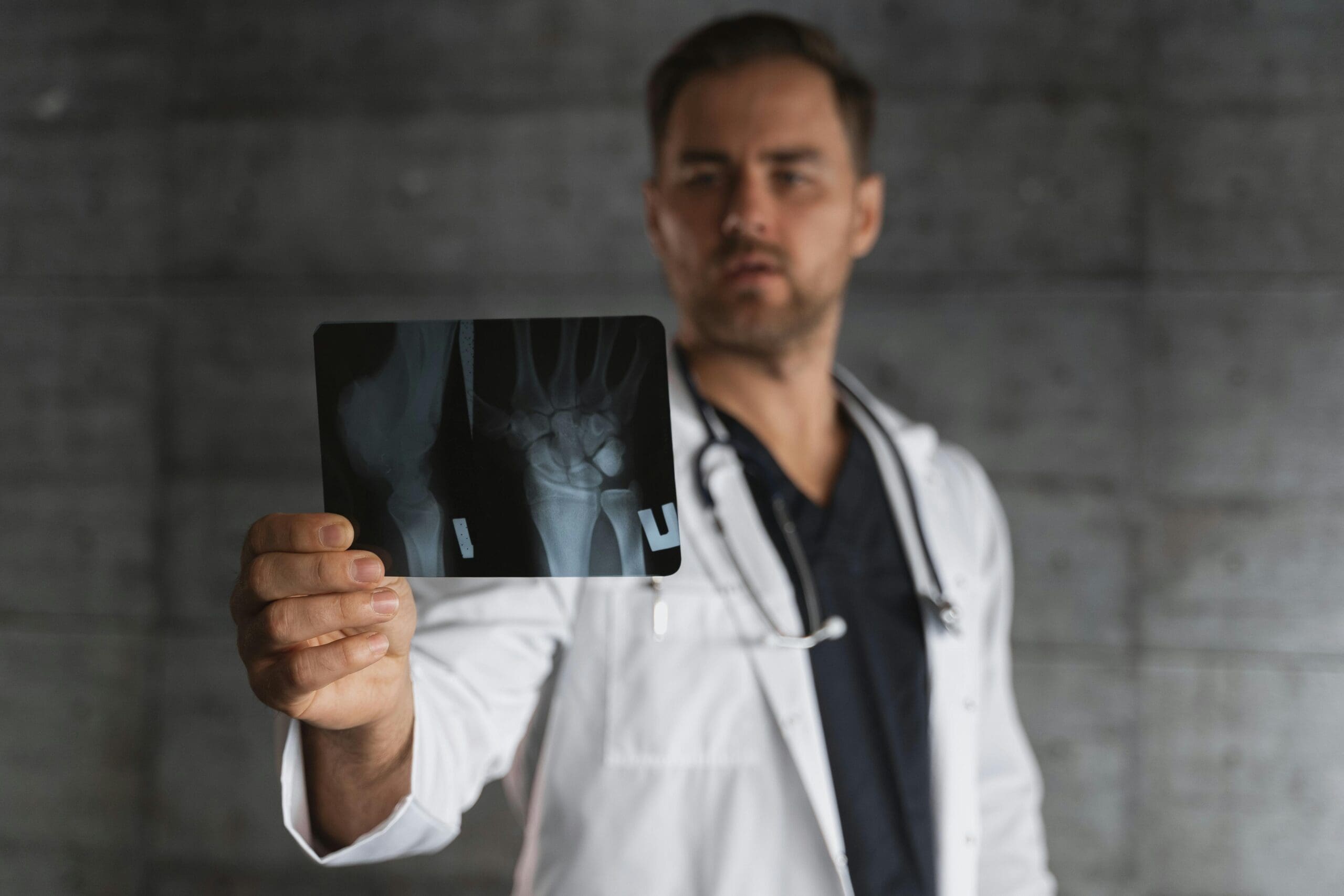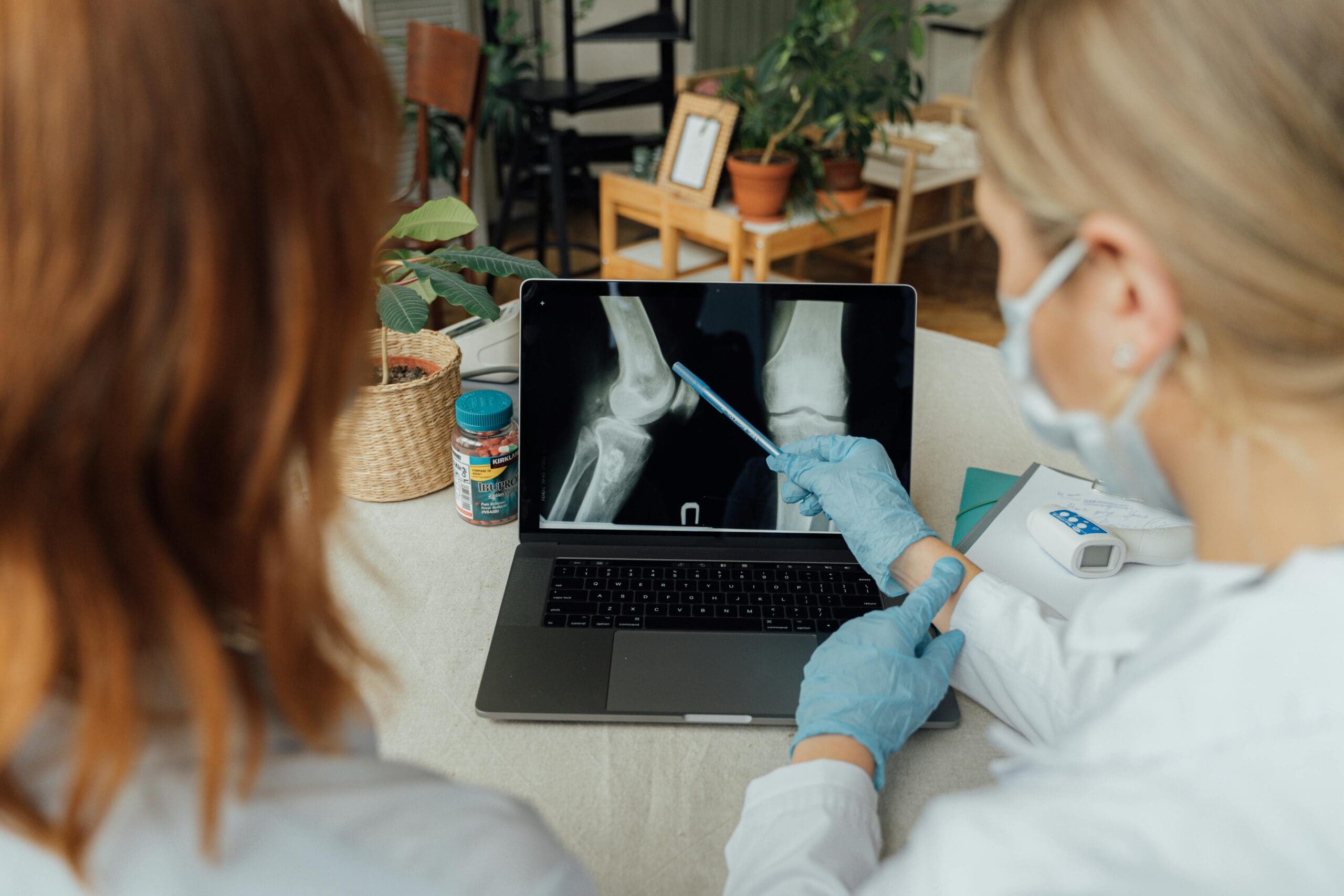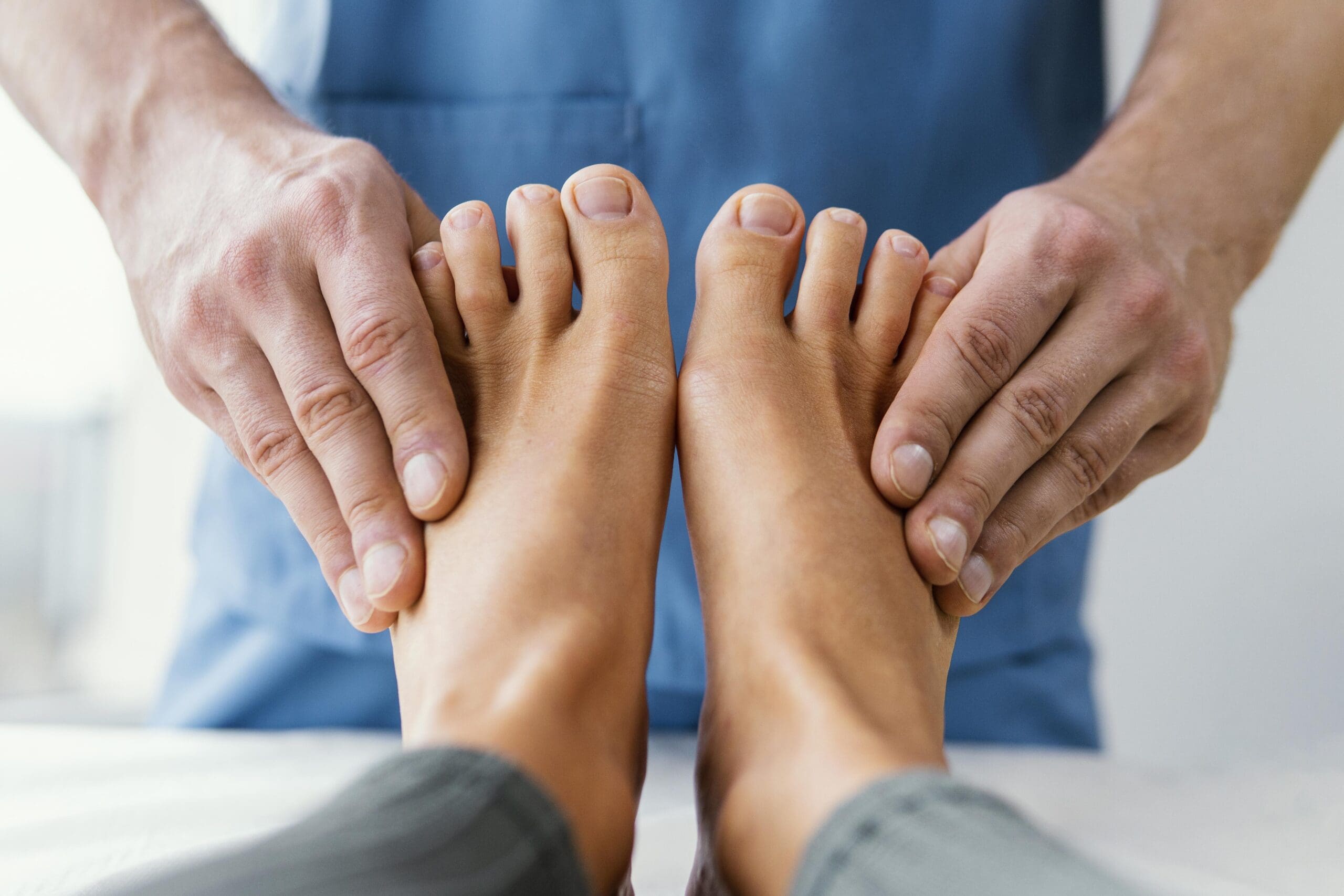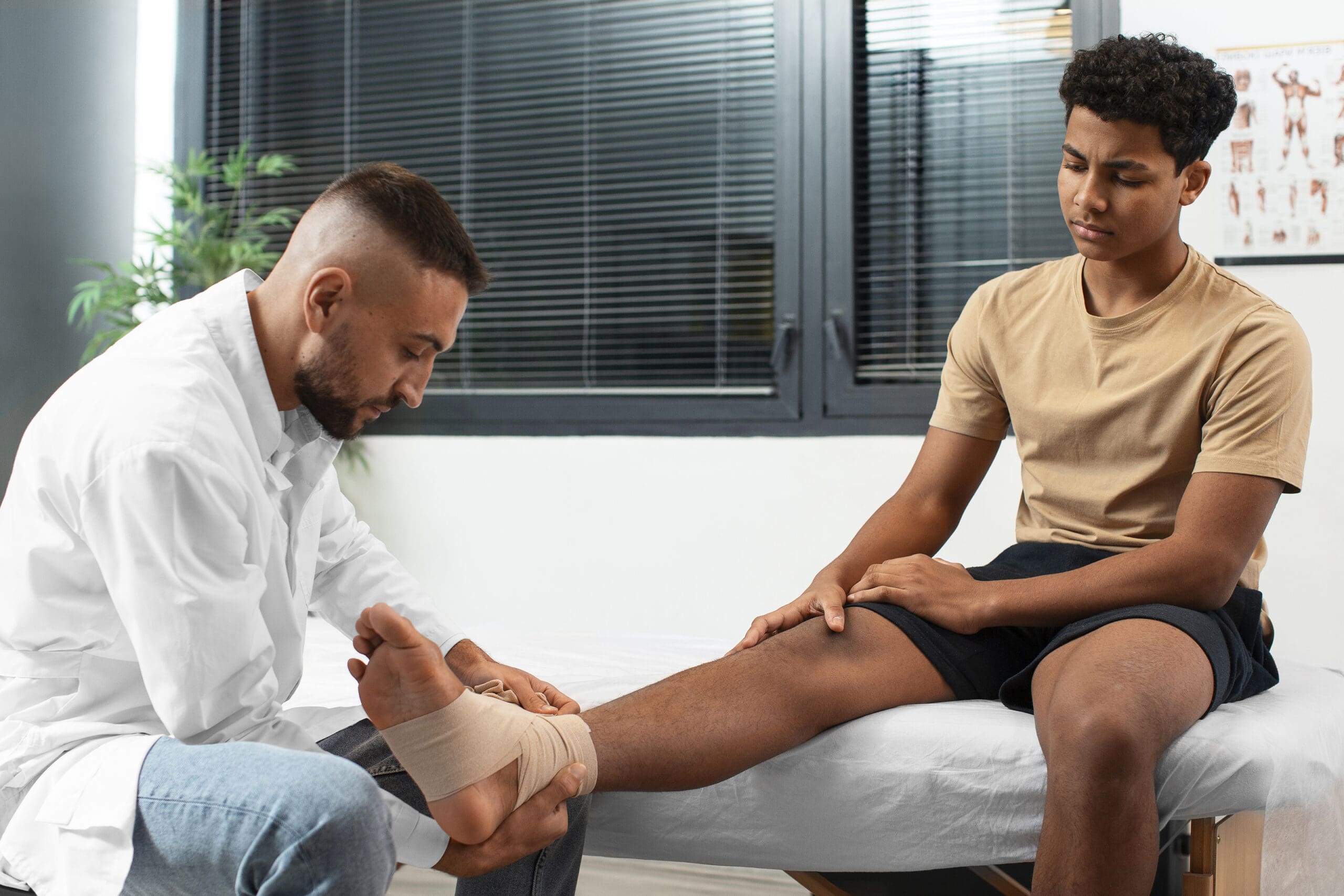Fractures can happen suddenly, whether from a fall, an accident, or even repetitive stress. Some are straightforward. Others affect joints, growth plates, or healing from previous injuries. Whatever the cause or complexity, timely and personalized treatment can make all the difference.
Dr. Ahmed Thabet is a board-certified orthopedic surgeon with fellowship training in orthopedic trauma, limb reconstruction, and pediatric orthopedics. He provides expert fracture care for everything from simple breaks to severe, multi-fragmented injuries and complications from prior surgeries. His goal is to restore bone alignment and function while supporting a safe and lasting recovery.
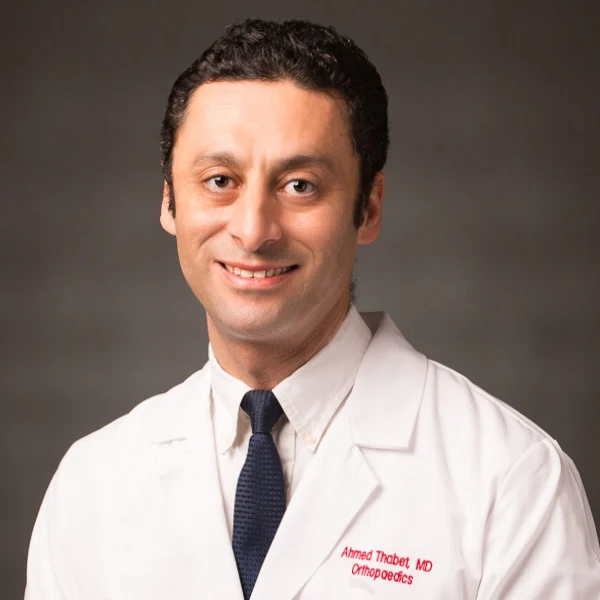
Dr. Ahmed Thabet Hagag sees patients in Angleton, TX and throughout the greater Houston area.
Understanding Fractures
A fracture refers to a break or crack in a bone, varying in severity and type. Identifying the type of fracture helps guide treatment and predict healing time.
Early management is critical, it helps control bleeding, reduces the risk of infection, and prevents complications like bone death or long-term instability.
Some of the most common types of fractures include:
- Simple fractures (also referred to as closed fractures): The bone breaks but does not pierce the skin, typically easier to align and stabilize.
- Unstable fractures: The broken bone fragments are misaligned and likely to move, requiring surgical intervention.
- Open (compound) fractures: The bone pierces through the skin, increasing infection risk and complexity of care.
- Greenstick fractures: Often seen in children, where the bone bends and cracks on one side but doesn’t break completely.
- Stress fractures: Small, hairline cracks caused by repetitive activity, common in athletes.
- Comminuted fractures: The bone shatters into several pieces, usually from high-impact trauma.
- Compression fractures: Occur when the bone is crushed, frequently affecting the vertebrae in people with osteoporosis.
Common Causes of Fractures
Fractures can happen for a variety of reasons, and understanding these causes can lead to earlier diagnosis and better outcomes.
Trauma remains the most common cause. This includes falls, motor vehicle accidents, motorcycle crashes and sports injuries.
Fractures can also result from overuse. Athletes, for example, may develop stress fractures in bones repeatedly exposed to high impact.
In older adults or individuals with osteoporosis, even minor incidents such as bumping into furniture or stepping off a curb awkwardly can cause a break.
Diagnosis and Personalized Treatment
We begin with a physical exam, checking for tenderness, range of motion, and visible deformities. X-rays provide a clear view of the break, while CT or MRI scans help us evaluate complex or hidden fractures involving joints or soft tissue.
Once the diagnosis is clear, we create a personalized treatment plan. Fractures vary in complexity, from a simple fracture to injuries near joints or growth plates. Dr. Ahmed Thabet develops treatment strategies that support both immediate recovery and long-term function. Each case is assessed individually to determine the most effective and least invasive approach possible.
Comprehensive Fracture Management
We manage a wide spectrum of injuries, from basic to highly complex:
- Growth plate injuries
- Periarticular (joint-related) fractures
- Pelvic and acetabular injuries
- Fragility fractures from osteoporosis
- Complex or comminuted fractures
- Post-traumatic complications such as nonunion or malunion, infection, bone loss, joints or tendons contractures, joint stiffness or loss or motion
- Fractures complicated by failed implants or surgeries
Fractures by Region
Fractures can affect different parts of the body in different ways. The table below highlights how we approach care based on the injury location:
Region | Common Injuries | Approach to Care |
| Foot and Ankle | Toe fractures, Lisfranc fractures, hindfoot (back of your foot) fractures, ankle joint injuries | Treatment ranges from immobilization to reconstructive surgery, especially when joint surfaces are involved |
| Hip | Femoral neck fractures, intertrochanteric fractures | Both surgical and non-surgical options are available depending on the patient’s age, mobility, and health. |
| Thigh, Knee and Leg | Tibial shaft fractures, tibial plateau fractures, femur fractures | May require internal fixation or external stabilization, particularly in cases of high-energy trauma. |
| Pelvis | Pelvic ring fractures, acetabular fractures | Often caused by high-impact trauma, these injuries may require surgical fixation to stabilize the pelvis and protect internal organs. |
| Shoulder, Arm, Elbow | Clavicle fractures, proximal humerus fractures, elbow dislocations | Realignment, stabilization, and structured rehabilitation help restore mobility and function. |
Non-Operative Therapies
Not all fractures require surgery. Whenever possible, we use conservative options including:
- Immobilization with a cast, splint, or brace
- Activity modification
- Weight-bearing restrictions
- Skin and skeletal traction in certain complex fractures
Advanced Surgical Techniques
When surgery is necessary, we use the least invasive method that will achieve stable, long-term healing.
Dr. Thabet is highly trained in the most current orthopedic techniques and surgical procedures, including:
- Open reduction and internal fixation (ORIF) to realign and secure broken bones
- External fixation using frames or rings for unstable or multi-fragmented fractures
- Corrective surgery for malunions
- Revision procedures for previously failed repairs
- Bone grafting and specialized implants to support healing in complex cases
When Fractures Don’t Heal Properly
The majority of fractures heal without any issues, however, in some cases, a fracture doesn’t heal the way or in the time frame it should.
This can lead to either a nonunion, where the bone doesn’t heal at all, or a malunion, where it heals in the wrong position. The implants used in the initial surgeries may fail with broken screws, plates or nails. These complications can result in ongoing pain, deformity, or loss of function and they require specialized care to correct.
What is a Nonunion?
A nonunion occurs when a fracture hasn’t shown signs of healing after several months. It may result from poor blood supply, infection, insufficient stabilization, or underlying health conditions. In many cases, surgical intervention is needed to restart the healing process.
What is a Malunion?
A malunion is a fracture that has healed, but in the wrong position. This can lead to visible deformity, joint misalignment, or altered limb function. Treatment may involve rebreaking and realigning the bone, followed by proper fixation.
Rehabilitation and Recovery
Surgical repair is only part of the journey. We focus heavily on recovery, offering physical therapy, guided rehabilitation, and close follow-up to ensure progress. Pediatric patients receive growth monitoring to track bone development long after the cast comes off.
Our recovery plans are tailored to your specific fracture and lifestyle. We offer:
- Individualized physical therapy
- Pain management, including both medication and non-drug techniques
- Education on how to safely resume daily activities and prevent re-injury
Get Expert Help for Broken Bones and Complicated Fractures
From your initial diagnosis to full rehabilitation, we provide individualized treatment and support every step of the way. Whether you are dealing with a new fracture or complications from a previous injury, we’re here to help you heal and return to the activities you enjoy.
FAQs About Bone Fractures
What is the most serious type of bone fracture?
Open (compound fractures with open skin wounds) fractures are generally considered the most serious because the broken bone pierces through the skin, increasing the risk of infection, blood loss, and damage to surrounding tissues.
Which bone takes the longest to heal?
The femur (thigh bone) typically takes the longest to heal due to its size and the amount of force it absorbs during normal activity. Healing can take several months, especially in more severe cases.
What type of fracture is considered traumatic?
Traumatic fractures occur due to a sudden impact or injury, such as a car accident, fall, or sports collision. These often include comminuted, displaced, or open fractures.
What are the 7 types of fractures?
The seven common types of fractures include simple (closed) fractures, open (compound) fractures, comminuted fractures, greenstick fractures, stress fractures, compression fractures, and oblique or spiral fractures.
How do I find expert fracture care near me?
If you’re looking for expert fracture care near you, Dr. Thabet provides comprehensive treatment for both simple and complex fractures in Angleton, TX. He welcomes patients from Houston, League City, Galveston, and surrounding Southeast Texas communities.
